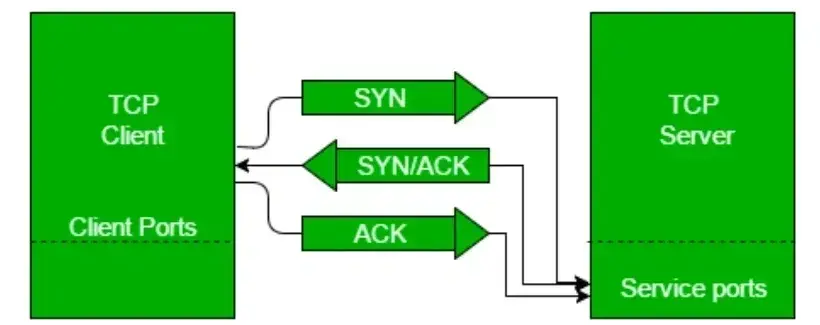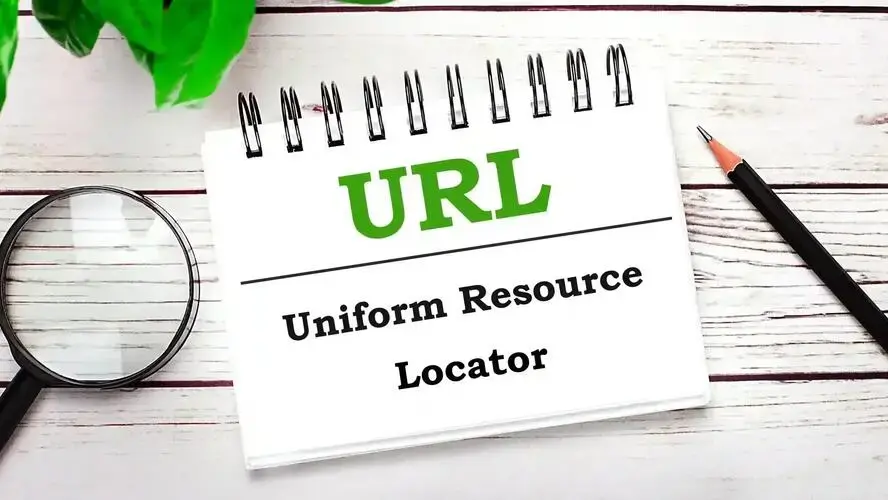The internet hosts an estimated 1.98 billion websites, each serving a unique purpose, from e-commerce and lifestyle blogs to corporate portfolios. Navigating this vast network relies on understanding how website URLs function, which are more than just addresses.
These URLs are crucial components of online identity and branding, acting as powerful guides that lead users to your digital presence and boost the visibility of your services. For resellers and those involved in reseller hosting, mastering the strategic elements of a URL can dramatically differentiate their services.
Key Internet Functions
So how can we choose or explore different websites for our own use? If we were to offer a brief explanation of how the internet functions, we would state that there are three main players: a website, a browser, and a server. This is assuming that we have no prior knowledge of how the internet functions.
Transmission Control Protocol (TCP) and Internet Protocol (IP), two groups of communication protocols used to connect network devices on the internet, are used to transport information between the three parties.
TCP explains how applications can establish communication channels within a network. The process of breaking a message into smaller packets is also managed by it, and IP specifies how each packet is addressed and routed to guarantee it reaches its destination. This IP address is checked by every gateway on the network to determine how to forward the message.
Therefore, to access a website, you need a uniform resource locator (URL), which represents the address of a certain file on the TCP/IP network and connects a user to a file on any computer connected to the Internet anywhere on the globe.
The URL is a location-specific address that is used to help us find websites or web pages. It is the address you typed into your browser to find a website, such as "www.verpex.com." We can send website links to friends and relatives using URLs so they can click on them and access the intended content. The uniform resource locator (URL) is used to build all web pages. To better understand, let's go through a detailed definition of a website URL.
What is a URL?
To locate resources on the internet, a uniform resource locator (URL) is employed. It is a unique address that links to certain websites when entered into any online browser, such as Apple's Safari, Google Chrome, and so on.
Consider a URL as being similar to your home or business address. If you want someone to find you, all you have to do is give them your address. When you enter a website address into your web browser, the browser converts the domain name to the IP address of the server, which is where the files are stored, and these files can be in the form of text, images, videos, and so on.
What is a Domain Name?
You may be wondering what a domain name is; it is an address that points to the entire website on a server. Websites on the internet have domain names, and every domain name is associated with an IP address. It would be difficult to remember long IP addresses that are composed of numerical digits if that was the only means available to be able to access websites on the internet.
Domains come in various types, they are; .com, .org, .gov, .edu, etc. which are used by commercial companies, organizations, government and educational institutions.
Using a Domain Name System (DNS), the domain name assists a web browser in locating a website's server. The DNS is in charge of determining the web server’s actual IP address.
Every website is issued an IP address, just as every house in a community is assigned a house number. Let's search for www.google.com's IP address. A basic technique would be to use the ping command:
Step 1: Start your CMD (command Prompt)
Step 2: Enter ping, then the website's name, and then hit enter.
This is how it would look:

The IP address is 216.58.223.228. If you copy this IP address and paste it into your browser, it will send you to the Google search page. Due to security considerations, this does not function with many websites; also, many websites use multiple IP addresses.
A typical URL address looks like this: https://verpex.com/blog/latest-blogs, wherein we have the domain name "Verpex.com" and the protocol HTTPS, which is a path known in different forms like HTTP, HTTPS, FTP, FTPS, etc. However, we’ll be taking a look at the commonly used protocol, which is HTTPS.
HTTPS is HTTP that uses TLS (Transport Layer Security) or SSL (Protect Sockets Layout) to secure conversations over a computer network or to encrypt network requests and answers to secure information.
HTTP is made up of requests and responses; for example, if you click on a website link or a hyperlink, the browser will send a sequence of GET requests to show the content. The GET request as the name implies is a method used to grab or fetch data or resources from a data source or web server.
The request is sent to the server, which generates an HTTP response to the request. The distinction between HTTP and HTTPS is that the former lacks the technology for securing data transmitted over a network. If a communication is sent across a network using HTTPS, it is changed into a series of characters rather than plaintext to prevent any type of intrusion or cyberattack. If a website starts with HTTP (Hypertext Transfer Protocol), it signifies that the data is not encrypted; in other words, it is not secure.
The TCP Handshake (Syn - SynAck - Ack )
The three-way handshake is used to establish a connection between the server and the client during a TCP/IP connection. It is a connection-oriented transport protocol that reliably delivers data. When we want to communicate with a server, we must first create a TCP connection via a three-way handshake. That is;
The client requests synchronization, or connection, by sending an SYN(Synchronize) request to a server. SYN-ACK, which stands for synchronization and acknowledgement, is the server's response. The server will acknowledge the client's request and seek synchronization from the client.
Following this, the client will react with "ACK," which stands for "acknowledged," indicating that it is willing to establish a connection with the server.

src: https://www.geeksforgeeks.org/tcp-3-way-handshake-process/
When you enter a URL such as "www.google.com" into your web browser, the server responds with a web page.
What are the Types of URLs?
There are two ways to refer to pages within websites;
- Absolute URL
- Relative URL
Absolute URL
The complete address needed to access the resources is contained in this URL. Additionally, an absolute URL only permits one instance of a resource. This is because multiple websites cannot share the same domain name; each one must have a different name. This is the structure an absolute URL would follow is; Protocol: //domain/path E.g. https://developer.mozilla.org/en-US/docs/Learn
Relative URL
This URL connects to a file on the same server or in the same folder. You cannot access other domains with it; you can only access material on the same web page. It is essentially a condensed form of the absolute URL; it omits the protocol and domain name in favor of just the route and, occasionally, the resources. A benefit of using a relative URL is that you won't need to alter the links on your website if you need to change your domain name. A relative URL would follow this structure: /en-US/docs/Learn
Conclusion
Isn't it fascinating how the internet works? While it might seem complex, having a basic understanding of its functions is crucial, especially if you are involved in the computer field as a web developer or network integrator.
Even a general grasp of its operations can illuminate how data like images, text, and videos are stored and accessed. When a unique web address or URL is used, the requested document be it in HTML, CSS, or JavaScript format is retrieved from a server, translated by a web browser, and delivered accurately and promptly. This process, at its core, is about connecting people to information, making it essential for anyone involved in digital enterprises.
For those looking to ensure their websites are built on a solid platform, Verpex offers hosting plans that are optimized for speed and performance. Understanding and leveraging URL management and reseller hosting services are fundamental for navigating the online world effectively. Verpex provides the necessary tools and services to help digital enterprises,
Frequently Asked Questions
Are HTTPS urls encrypted?
Information between a web service and a client is encrypted through HTTPS.
What makes a certain domain valuable?
Valuable domains are usually memorable, easy to spell, pronounce, and short.
Is selling domain names for profit legal?
Yes, selling domain names for profit is perfectly legal. What’s not legal is purchasing a domain name that incorporates a trademarked name with the intention of getting profit from the reputation of the trademarked entity.
Is domain flipping dead?
Domain flipping is certainly not dead, and if you get things right, you can still make some good money in the business.

Jessica Agorye is a developer based in Lagos, Nigeria. A witty creative with a love for life, she is dedicated to sharing insights and inspiring others through her writing. With over 5 years of writing experience, she believes that content is king.
View all posts by Jessica Agorye




















